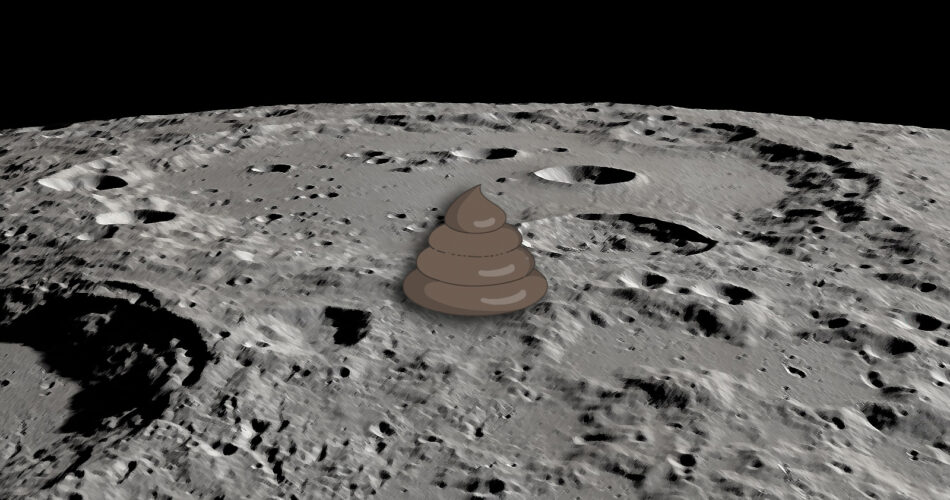What’s left of astronauts’ organic waste on the moon?
The Apollo landers were designed to lift off from the lunar surface at a particular weight. Since the Apollo astronauts were charged with bringing large amounts of Moon rock back home, the weight of those samples was offset by leaving behind unwanted items. This discarded junk included, among other things, two golf balls, 12 cameras, 12 pairs of boots, a gold-plated telescope, and a total of 96 bags of “human waste”, urine, feces, and vomit.
This waste must not have had permanent effects on the lunar environment because any microorganisms present in the human waste could not have grown under the harsh conditions of the lunar surface. It is possible, however, that some could have survived for a time as dormant, inactive spores. So, after 50 years on the lunar surface human waste, which is now probably just bags of dust, may contain important information on the survival of microorganisms in space.
Astrobiologists are interested to see in case any of those microorganisms have undergone any genetic mutations due to the harsh lunar environment or have indeed survived in a dormant state. They hope one day that private companies may eventually return this human waste for study.
Those jett bags, used by astronauts to hold waste, “are the most protected of anything that would have high levels of fungi, bacteria, and viruses from Earth”, Schuerger says, a University of Florida space life scientist who recently co-authored a paper on the viability of microbes surviving on the moon. Fungi, by the way, are another form of microbial life that could possibly have survived. For astrobiologists, that means those bags are the most interesting objects on the moon.
Having said that, the chances that anything survived in any of those jett bags are slim, Schuerger says. He and his colleagues recently completed an analysis modeling the likelihood that any microbes from Earth are still alive on any of the surfaces of the spacecraft that were left behind on the moon.
In all the ways Earth is so hospitable to life, the moon is not. It does not have a protective magnetic field to deflect the most powerful and damaging cosmic radiation. It does not have an ozone layer to absorb the sun’s ultraviolet rays. The vacuum of the moon is inhospitable to life. And without an atmosphere, the moon is subjected to wild temperature swings over day and night: -173°C (-279.4 degrees Fahrenheit) at night and 100°C (212°F, or the boiling point of water on our surface) during the day.
There’s a good chance that a combination of radiation and the extreme temperature has killed the microbes in the jett bags. Schuerger says there’s a “low probability” that anything survived in them. “But it’s the highest probability of anything that landed on the moon”.
On the other side, the surface conditions are harsh, but don’t lose hope: “Microbes don’t need to have a lot of protection”, Margaret Race, a biologist at the SETI Institute, says.
After all, bacterial life has been found on Earth just about everywhere: at the very bottom of the ocean, near scorching thermal vents, 2 miles beneath one of Greenland’s glaciers. In addition, on the Apollo 16 mission, the astronauts performed an experiment where they kept a sample of nine species of microbes on the outside of the spacecraft, exposing them to the harshest conditions in space. Many of them survived (though a few days in space is not the same as 50 years in space).
A lot would have to go right for the microbes to be still alive, or at least revivable. Bacteria can’t replicate without moisture. So, the human waste would have to have been packaged really well, for one, so their environment could remain moist. “In the moist environment of a closed diaper, presumably you should be able to have replication”, says Mark Lupisella, a NASA scientist doing some preliminary work on a potential mission to retrieve the jett bags and study them.
The jett bags would have to still be intact, which is not a given considering the wild temperature swings on the moon; they could be ripped open by the mechanical forces involved with heating and cooling.
If microbial life can survive on the moon, even in a dormant state, it could mean that microbes can survive long stretches of time in the deep reaches of space, traveling between worlds, and propagating life along the way.
Source sciencefocus.com; vox.com

